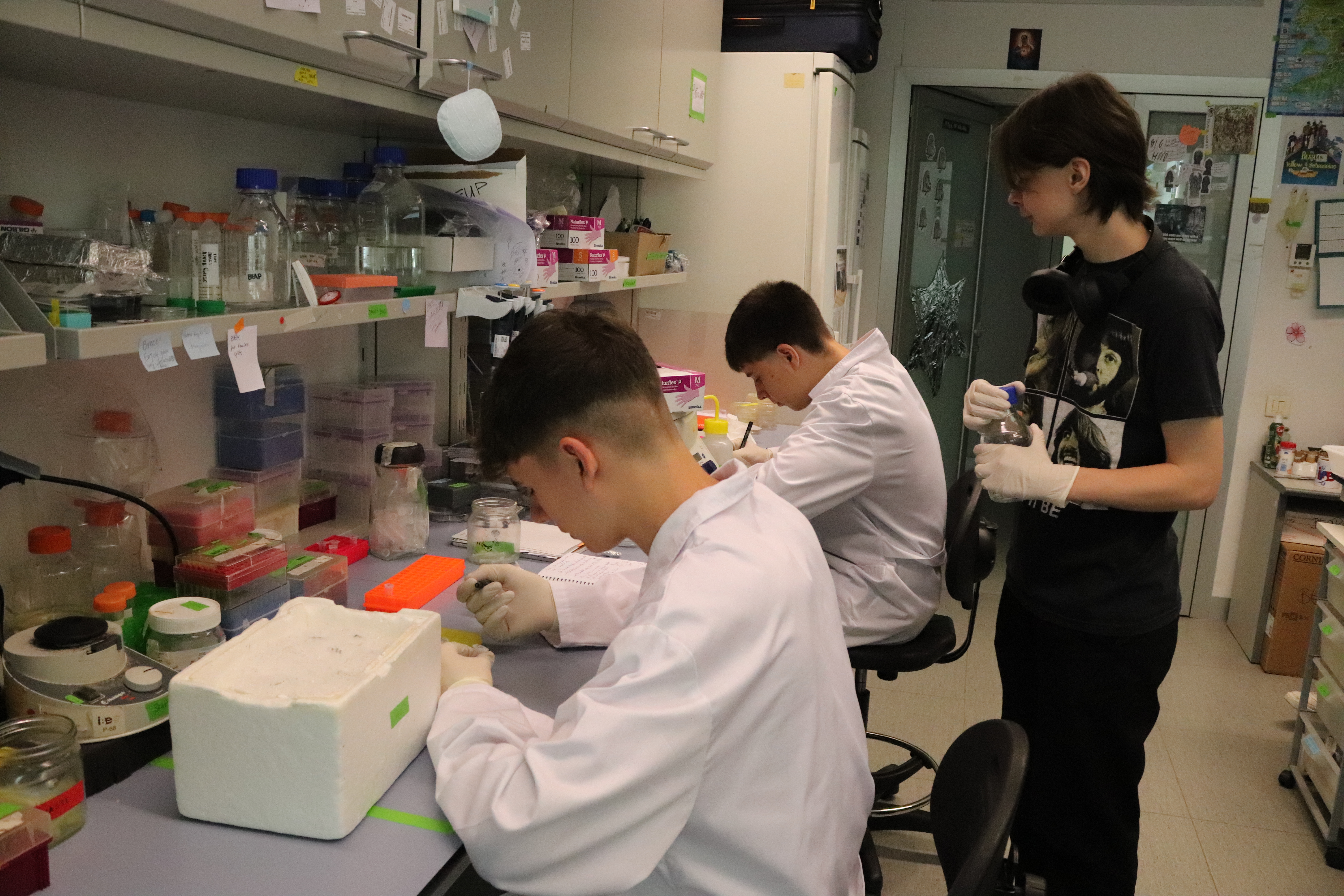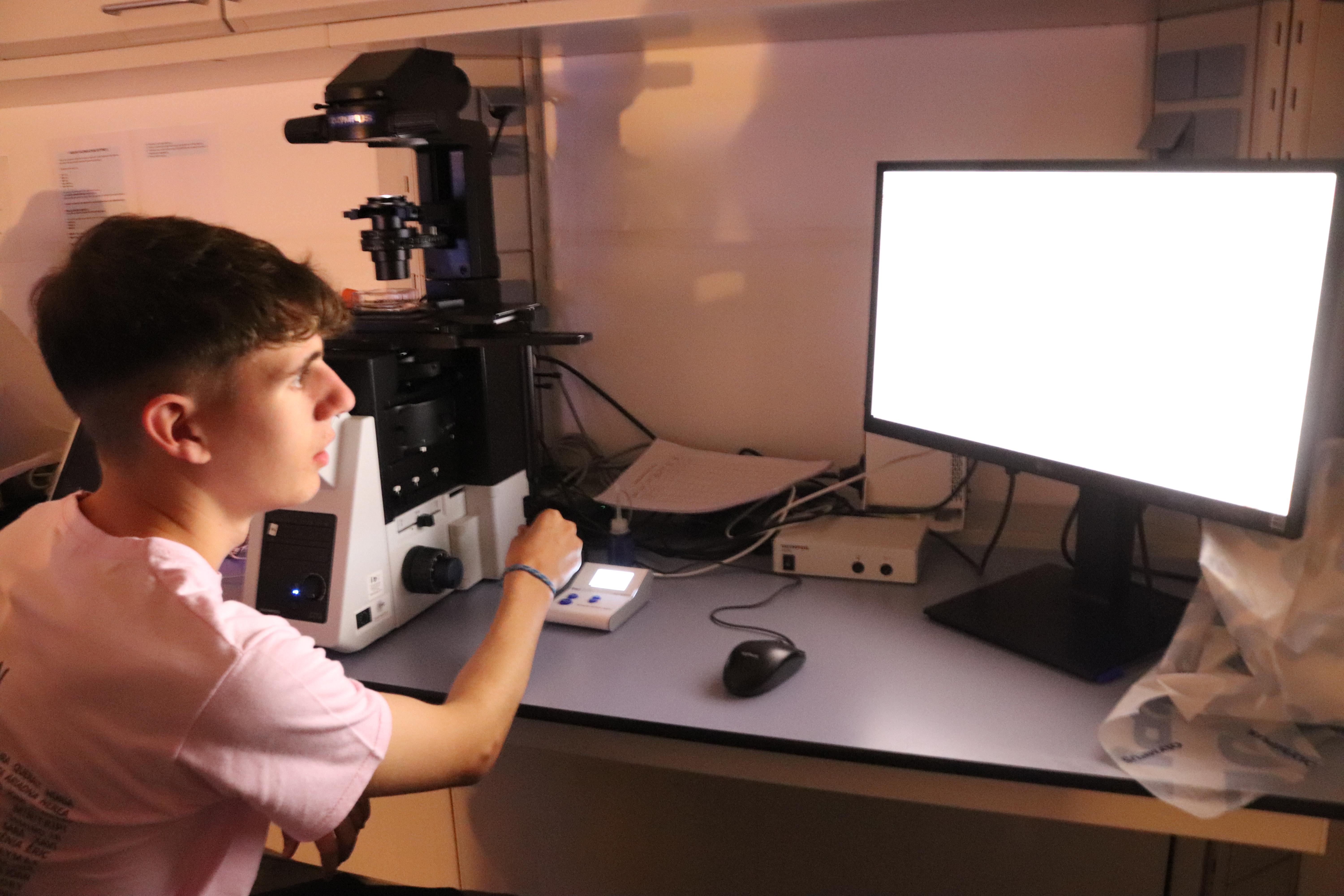The youngest science returns to the IBE this summer
The youngest science returns to the IBE this summer
Once again, the Institute of Evolutionary Biology (IBE) is participating in the "Joves i Ciència" initiative by the Fundació Catalunya - La Pedrera.
During this June, two high school students have been conducting research in the IBE's Laboratory of Biology and Ecology of Abundant Protists.
Accompanied by the team of Daniel Richter, Edgar Pérez, and Joan Soler, they are learning to characterize the most abundant protists on the planet.

Once again, IBE is taking part in the summer research program “Joves i Ciència” organized by the Fundació Catalunya - La Pedrera. This initiative aims to prepare the scientists of the future through unique research opportunities. This June, high school students Edgar Pérez and Joan Soler entered the Laboratory of Abundant Protist Biology and Ecology at IBE, led by Dan Richter. With the support of the IBE scientific team, the students have learned to characterize protists, single-celled eukaryotic microorganisms crucial for marine ecosystems.
A Month in the IBE’s Laboratory of Biology and Ecology of Abundant Protists
For a month, Edgar and Joan have joined Daniel Richter’s laboratory group, which studies the most abundant protists (eukaryotic microorganisms) on the planet. Despite being measured in micrometers, protists are a critical part of food chains in all major ecosystems on Earth. However, they remain largely unknown, and thus the IBE laboratory aims to isolate and culture them, and characterize the cell biology, behavior, ecological relevance, and evolution of these microorganisms.

The group collects seawater samples from various parts of the world, from the beaches of Grenada (Caribbean Sea) to the waters of the Mediterranean, where thousands of protists are yet to be explored. This month, Edgar and Joan’s goal has been to identify and characterize the different species of marine protists in some of these samples. To do this, they have learned basic molecular biology techniques, DNA extraction, culturing, and many other skills in bioinformatics, data analysis, and protist evolution. How did they achieve this?
A Day in the “Joves i Ciència” Internship
With the help of IBE PhD students Daryna Zavadska and Margarita Skamnelou, the young researchers have amplified, cloned, and sequenced 18S rRNA genes from protist cultures. The obtained marker gene sequence was used to identify the species to which the protist belongs.

After identification, the team investigated the behavior and morphology of the protist using microscopy techniques. Thanks to this, they observed ciliated protists surrounded by bacteria in a sample of seawater from San Francisco. Ciliates are characterized by hair-like structures called cilia, which they use for movement and feeding.

Learn more about the Biology and Ecology of Abundant Protists Lab and follow them on social media @beaplab_ibe to continue exploring the world of protists!
